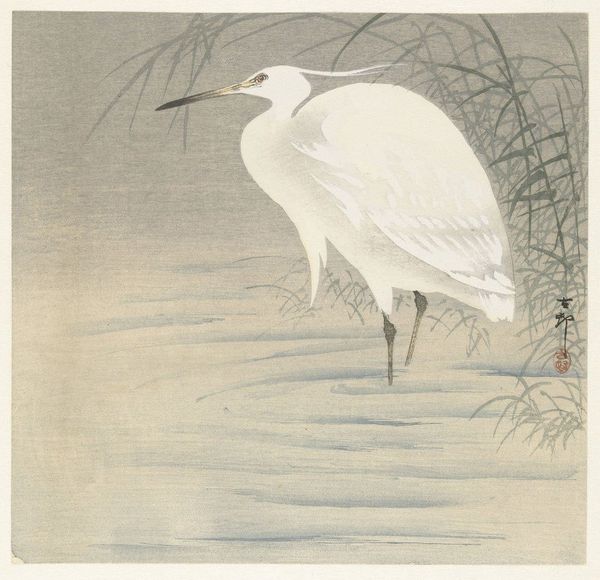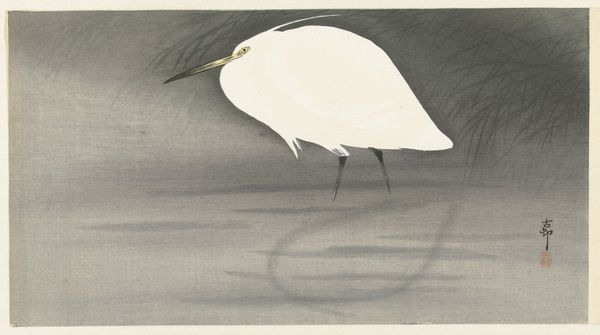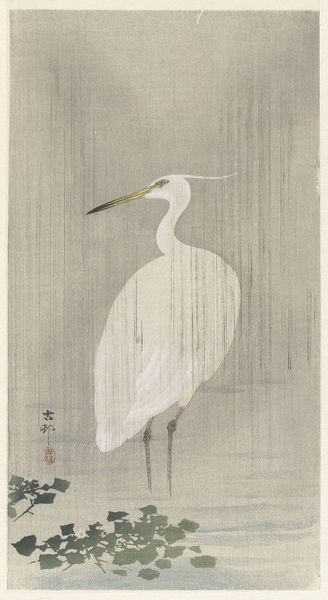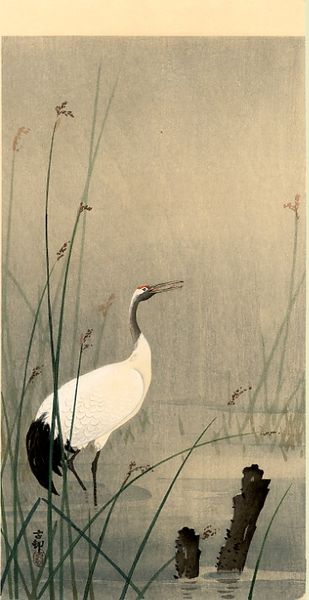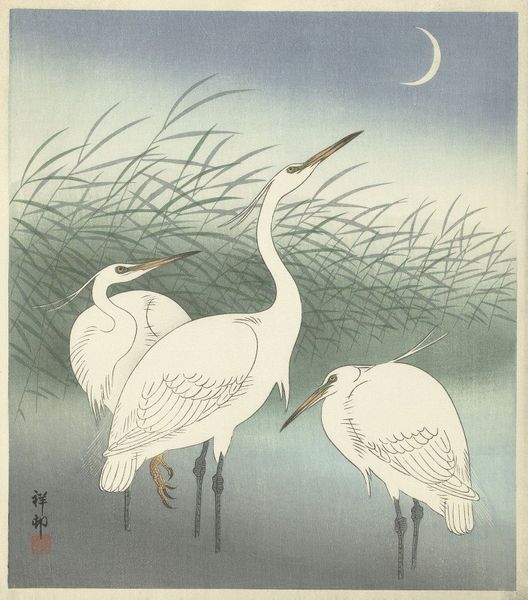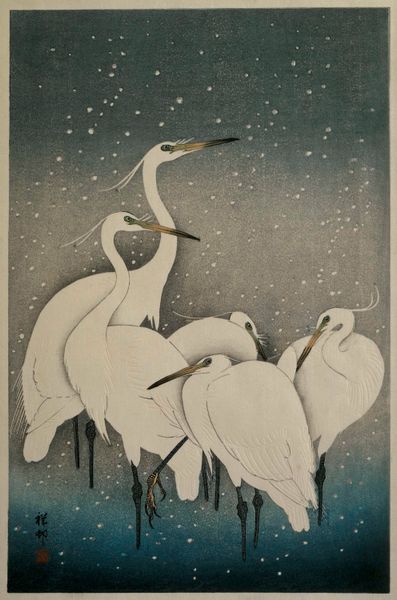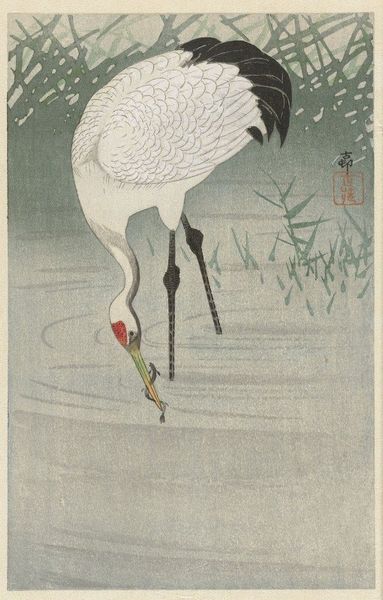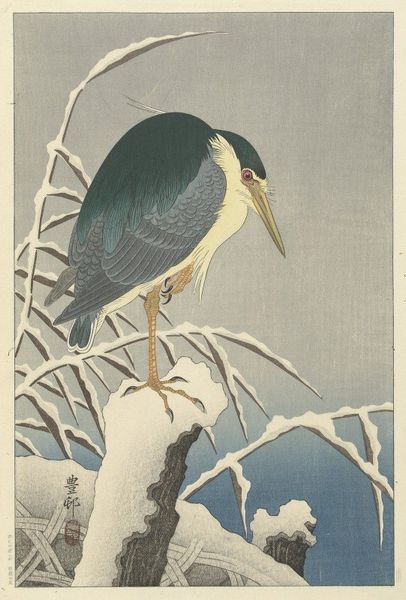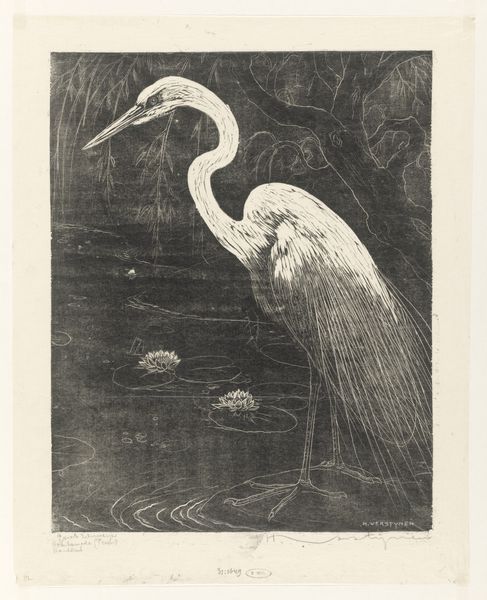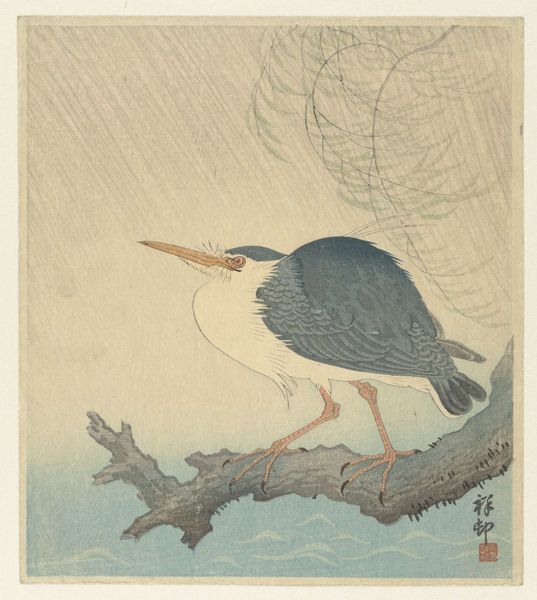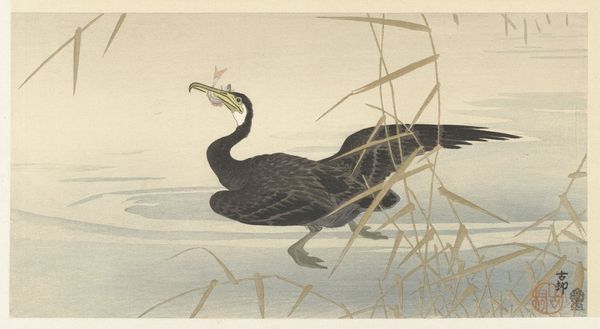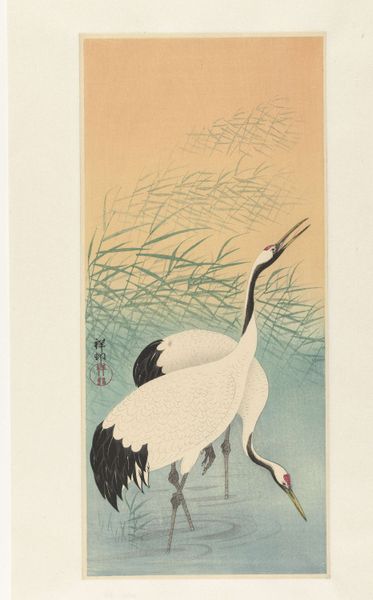
Dimensions: height 242 mm, width 250 mm
Copyright: Rijks Museum: Open Domain
Editor: This is "Kleine zilverreiger," or "Little Egret," a watercolor print by Ohara Koson, made sometime between 1900 and 1930. The subtle blues and greys create a wonderfully tranquil mood. What strikes you most about this piece? Curator: Well, what I see here isn't simply a tranquil nature scene, but a statement, however subtle, about humanity's relationship with the natural world. Koson, working during a period of intense modernization in Japan, seems to be making a conscious choice to depict a quieter, more traditional image of beauty. How do you interpret the bird's stillness? Editor: I hadn't thought about it in that context! It almost feels like a plea to slow down, to appreciate these simple moments. But is that stillness a sign of peace, or maybe vulnerability? Curator: Exactly! Consider the context: the early 20th century was a time of rapid industrialization and shifting global power dynamics. Japan, in particular, was grappling with questions of identity and tradition versus modernity. Doesn’t the egret, standing in the water, evoke a sense of being caught between worlds, between the natural and the artificial? Editor: That's a powerful idea. I initially saw only the aesthetic beauty, but now I see the tension beneath the surface. The artist seems to be using the natural world to comment on social and cultural shifts. Curator: Precisely. The choice of the egret itself is significant, isn’t it? In many cultures, birds symbolize freedom, spirituality. What does it mean to see it presented in such a serene, yet almost melancholic way? Is Koson hinting at something being lost in this rapid transition? Editor: This really changes my perspective. It’s more than just a pretty picture; it's a commentary on the human condition and its impact on nature. Thank you for pointing this out. Curator: It’s in examining the tensions between the artwork and its surrounding historical and cultural contexts, that its radical potential is revealed.
Comments
No comments
Be the first to comment and join the conversation on the ultimate creative platform.
